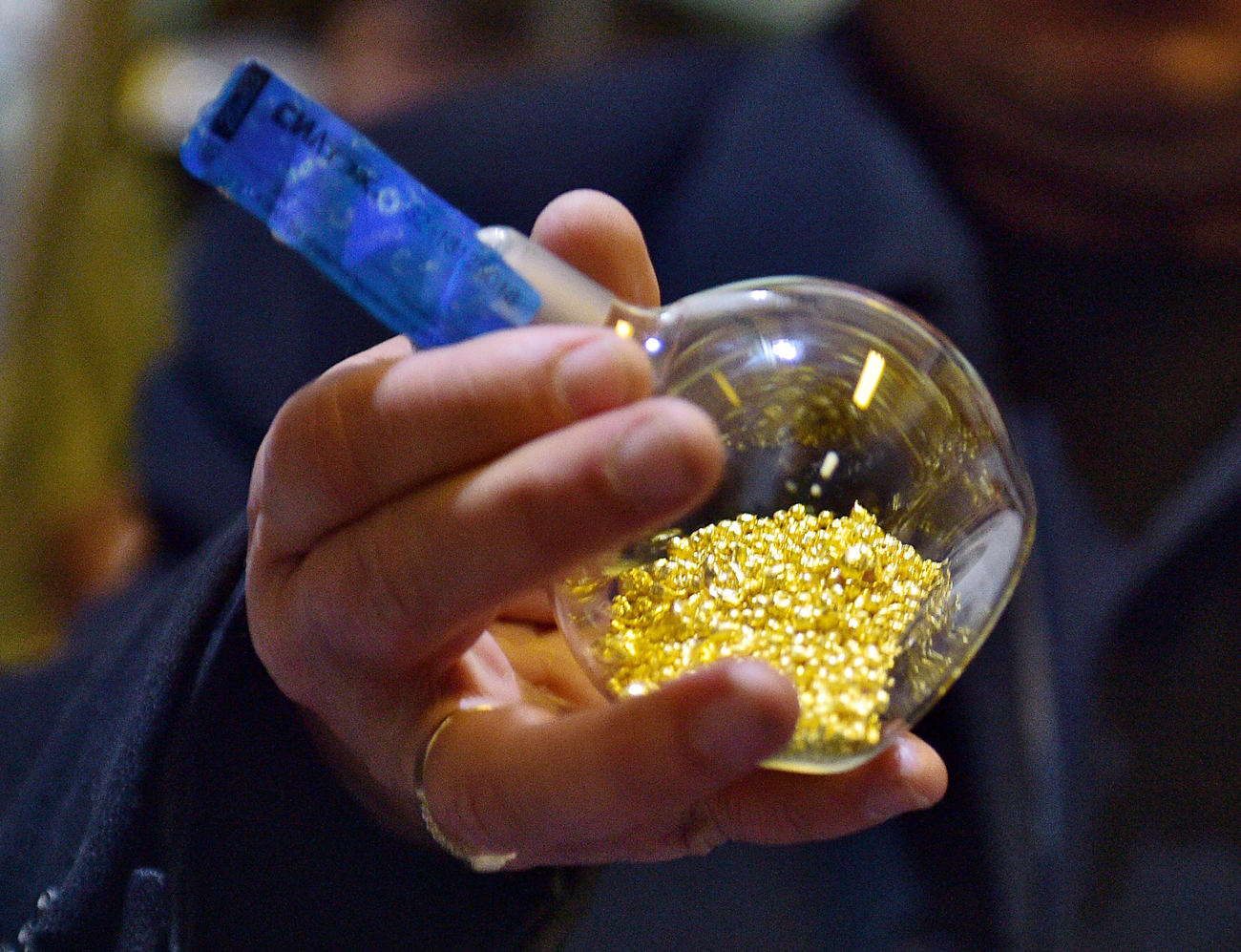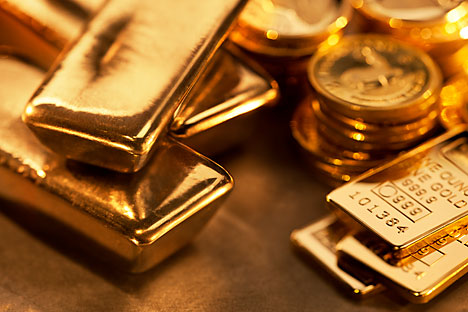BRICS countries to invest $500 million in Russian gold deposit

Russian gold mining companies are currently not taking part in developing Klyuchevskoye, but Russia stands to gain regardless of who develops the site.
KommersantA consortium made up of the Chinese state-owned mining firm China National Gold Corporation, India’s SUN Mining Group and the Russian Far East Development Fund, as well as funds from South Africa and Brazil is prepared to invest up to $500 million in the development of the Klyuchevskoye gold field in the Transbaikal region (over 4,000 miles east of Moscow). The agreement was signed during the most recent BRICS summit, which that took place in the Indian resort of Goa on Oct. 15-16. According to plans for the site, Klyuchevskoye will become operational three years after investment becomes available and will yield some 6.5 tons of gold per year.
This is the first mining deal in the history of BRICS that involves all five member states, which makes it particularly significant, says Wiktor Bielski, global head of commodities research at VTB Capital. Bielski adds that the agreement paves the way for bigger projects in the future that can benefit a wide range of BRICS investors.
Benefits for the partners
The Klyuchevskoye gold deposit was explored a long time ago, however, the bulk of the gold was not extracted because of the costly development process that was halted some 20 years back,according to Alexei Kalachev, an expert analyst with FINAM investment firm in Moscow. The China National Gold Corporation, however, has the relevant technological experience to extract and process the gold, Kalachev said.
The deposit is currently owned by India’s SUN Gold, Ltd., part of the SUN Mining Group, which has not begun to develop it. In August 2016, the Russian Federal Antimonopoly Service said that the China National Gold Group intended to buy 70 percent in the deposit from SUN Gold. According to Kalachev, the idea of a consortium may have evolved from an attempt to speed up the deal at the highest levels.
The Klyuchevskoye gold deposit is not especially rich; at its stated production volumes and reserves, it will have a life cycle of 11-12 years, while the average life cycle of gold mines worldwide is 15-16 years, says Artem Kalinin, a portfolio manager at Leon Family Office. Additionally, the cost of production at Klyuchevskoye is being forecast at the average global level. “That said, the Chinese are used to operating in this mode: the country’s steel and coal industries have very weak production costs, but they have so far been feeling quite alright thanks to cheap financing and state support,” Kalinin said.
Russian gold mining companies are currently not taking part in developing Klyuchevskoye, but according to Kalinin, Russia stands to gain regardless of who develops the site. “The Russians will get an opportunity to borrow new technologies and to get an infrastructure that the Chinese will build,” he said.
Alexei Kalachev notes that other obvious upsides for Russia include a rise in tax revenues, new jobs and an inflow of foreign investment.
What’s in it for China?
Despite the fact that China is the world’s leader in gold mining and one of the world’s largest consumers of the precious metal, its resource base is rather weak, says Kalinin. The CIS countries host the majority of the world’s gold reserves — 28 percent. Another 20 percent of the reserves are located in North America while Asian reserves make up just 11 percent.
Oleg Remyga, head of China studies at the Moscow School of Management Skolkovo, notes that China’s gold production is falling — it was down 0.4 percent in 2015 — while consumption is rising — up + 3.7 percent in 2015. “Hence, the clear ambition of Chinese companies to enter international markets,” Remyga explained.
According to Remyga, the China National Gold Group’s investment in the Klyuchevskoye deposit is part of this bigger drive for resources. Chinese companies have already purchased shares in Canada’s Pinnacle Mines, Ltd. as well as 50 percent of shares in a deposit in Papua New Guinea owned by Barrick Gold Corp. “I am convinced that it is just the beginning of acquisitions of Russian gold-mining assets by Chinese companies, such as Zijin Mining, China Gold, Zhaojin Mining Industry, and Shandong Gold,” Remyga said, adding that negotiations with them have been going on already for five years.
Subscribe to get the hand picked best stories every week
All rights reserved by Rossiyskaya Gazeta.
Subscribe
to our newsletter!
Get the week's best stories straight to your inbox

